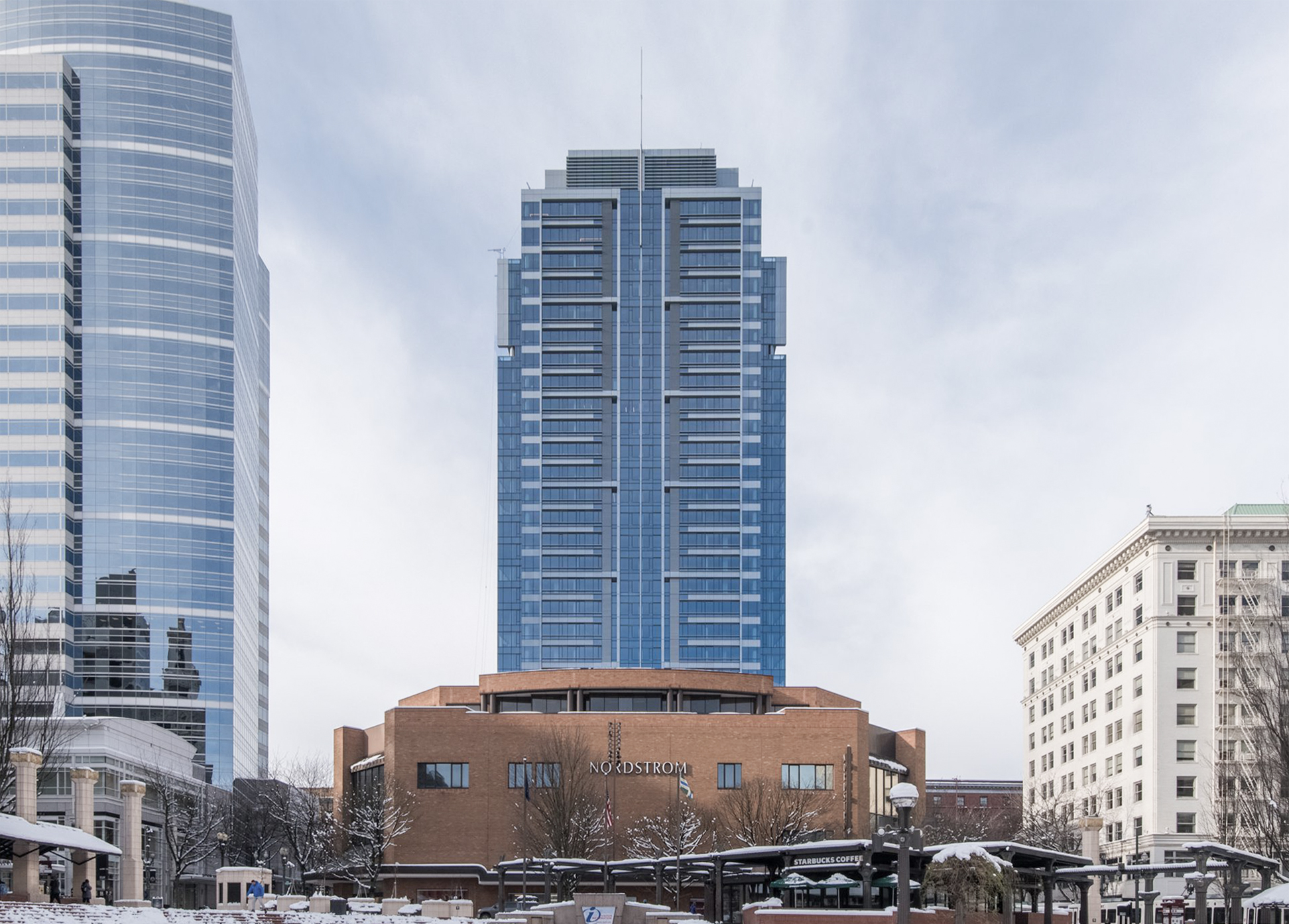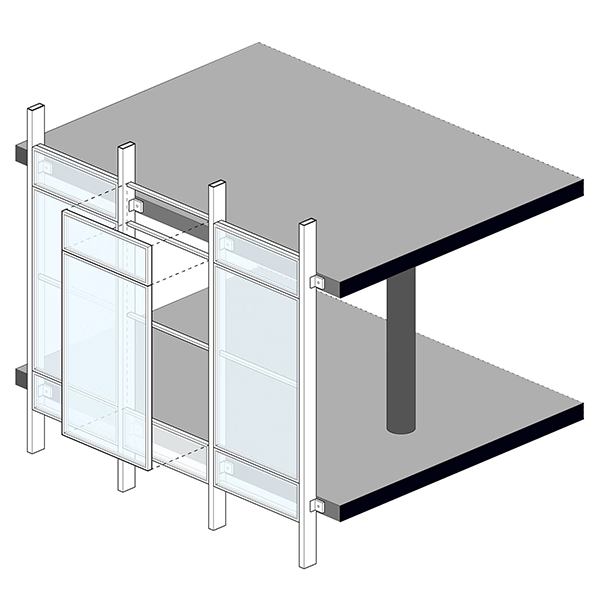The Park Avenue West Tower is a Contemporary skyscraper designed by TVA Architects, and built between 2008 and 2016, for a reported $141 million dollars, in Portland, OR.
Park Avenue West Tower is not the only name you might know this building by though. The building is, or has also been known as Moyer Tower.
Its precise street address is 725 Southwest 9th Avenue, Portland, OR. You can also find it on the map here.
The Park Avenue West Tower has received multiple architecture awards for its architectural design since 2016. The following is a list of such prizes and awards:
- AIA Portland Mayors Award in 2016
- Top Project Runner Up — DJC Oregon in 2017
The construction of the tower began in 2008 but was halted in 2009 due to a lack of funds, leaving a deep hole in the city center. In 2013, with a new loan, the developers were able to resume construction, which was completed in 2016.

